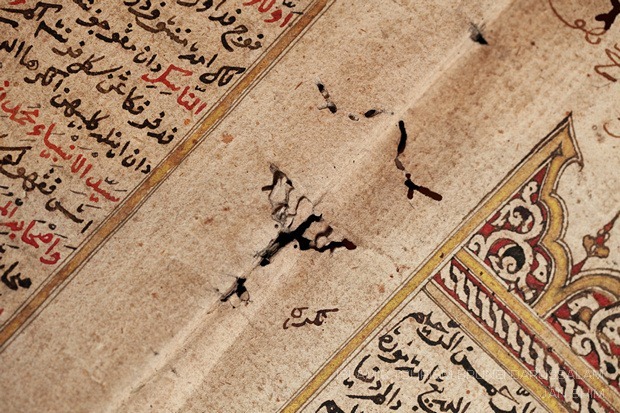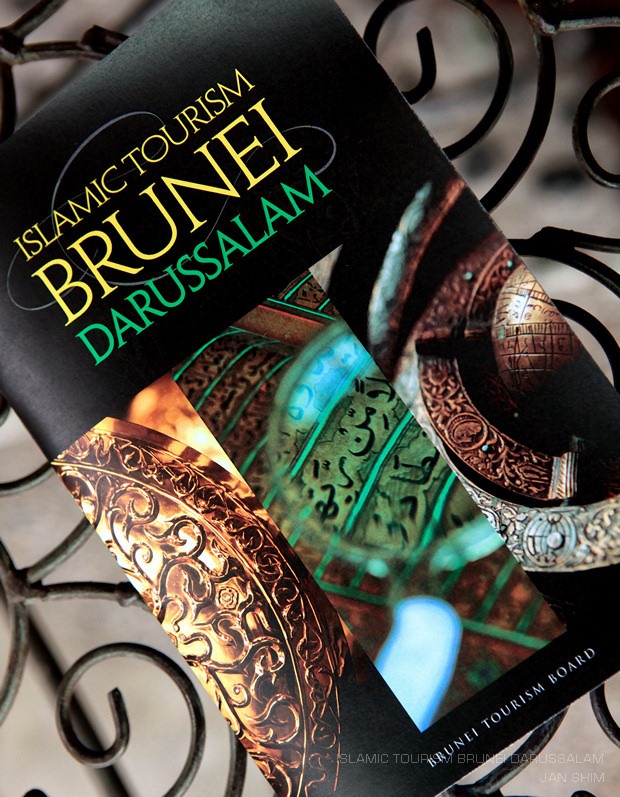
The
official 32-page Islamic Tourism book from Brunei Tourism Board that
contains images and information on the history of Islam, Malay &
Culture of Brunei, Islamic Artefacts collections.

Official lapel pin commemorating Islamic Tourism Brunei Darussalam. Thank you Brunei Tourism for this!
Brunei’s official history tells that the
first king to embrace Islam in Brunei was Awang Alak Betatar, who became
Brunei’s first Sultan under the name of Muhammad Shah after his
conversion in the 14th Century. However, historians have uncovered
fascinating evidence that shows Islam reached Brunei shores even as far
back as the 10th Century. — Page 5 | Islamic Tourism Brunei Darussalam
brochure.
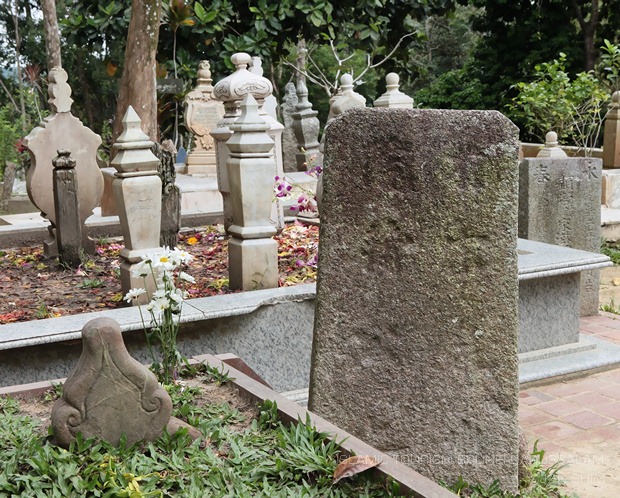
"According
to Chinese historical records, Islam was present in Brunei by 977 AD,
in the form of a Chinese Muslim trader and diplomat named P'u-lu-shieh,
who was bringing greetings from the Emperor of China."
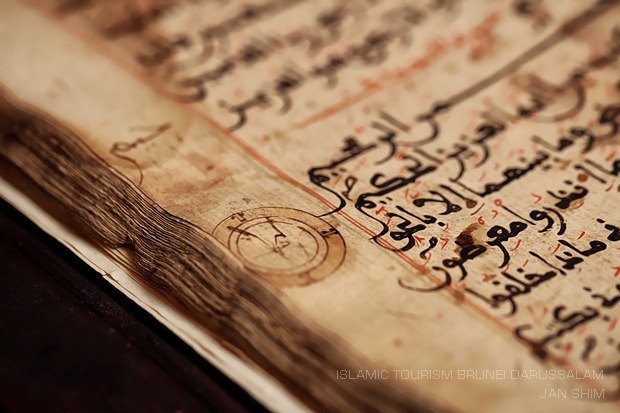
The
manuscript exhibition gallery preserves and exhibits more than 700
unique and rare Islamic manuscripts in various languages and Islamic art
calligraphy as decorations.
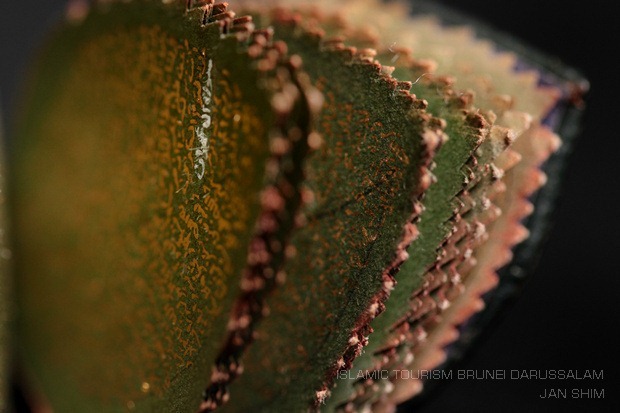
"More
than 300 al-Qur'an and Quranic manuscripts in various forms and sizes,
written on various materials and in various shapes such as this leaflike
depicting the uniqueness and spendour of Islamic art."
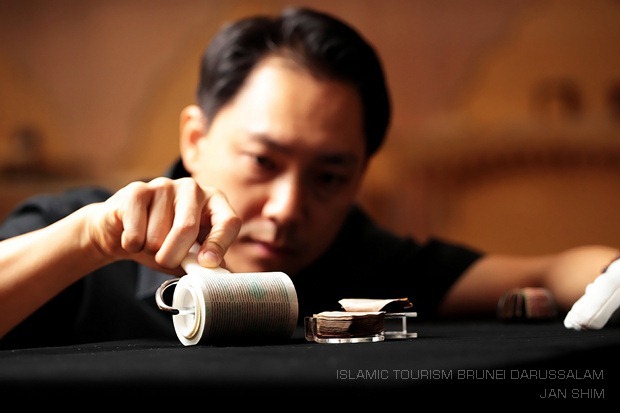
Behind
the scenes: In preparation to photograph a small Quran, adhesive lint
remover is used to help remove dust and other unsightly debris that
stick to the black velvet fabric. Photo by Gavin.
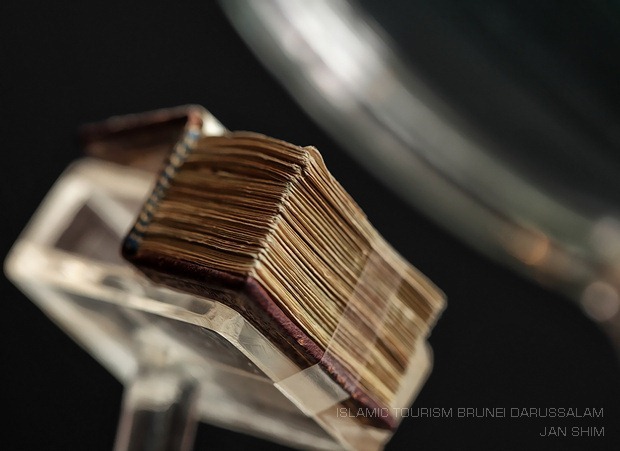
A magnifying glass makes it possible to appreciate the intricate workmanship of this tiny Quran.
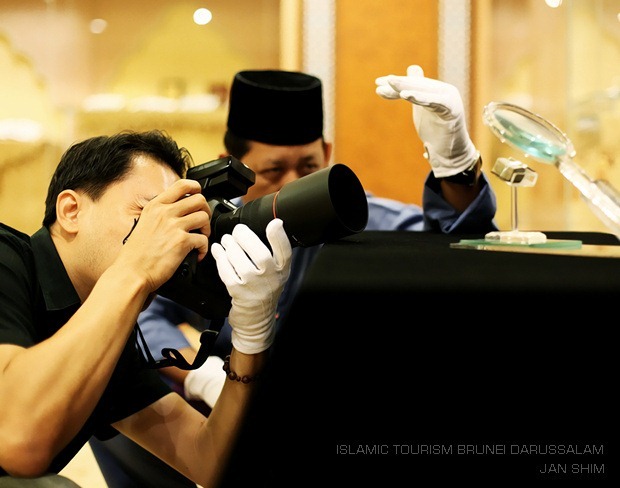
"It
seems unfathomable when we contemplate how the Al-Quran can be drafted
in tiny but flawless calligraphy. Nevertheless, closer inspection of
these miniature Al-Quran with a magnifying glass proves that it is
indeed possible. Photo by Gavin.
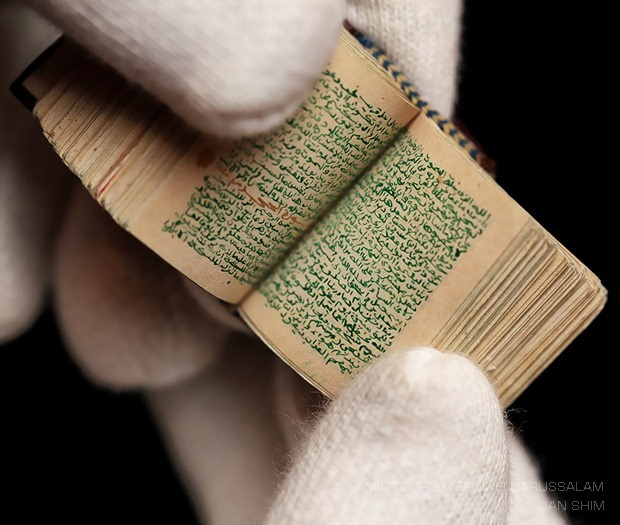
Collection
of miniature Al-Quran is a testament to the magnificent handiwork of
the artists of the past in their ability to create complex works of art
without the assistance of technology.
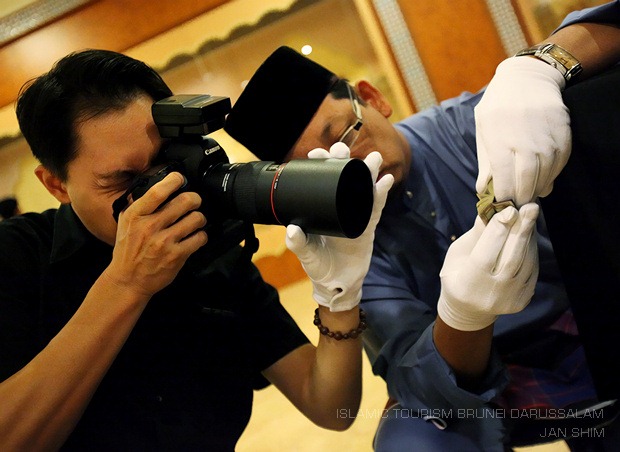
Behind
the scene: Every single image in this assignment is shot hand-held
including the smallest Quran held by Pengiran Ibrahim as seen on page 16
of the brochure. Photo by Gavin.
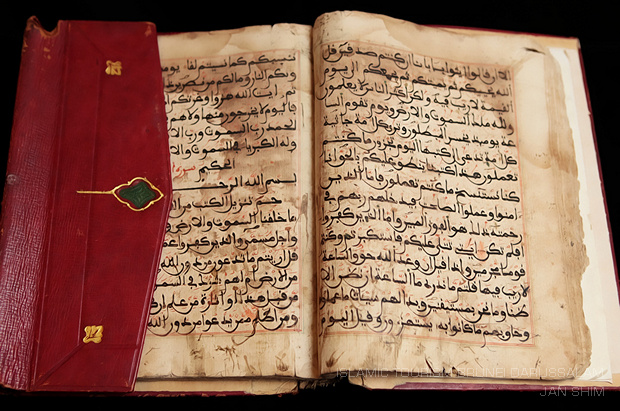
A
Mushaf piece ('the manuscript bound between two boards') of Moroccan
origin and written in Kufi calligraphy is one of the most prized
possessions of the gallery and is believed to be over 1,000 years old.
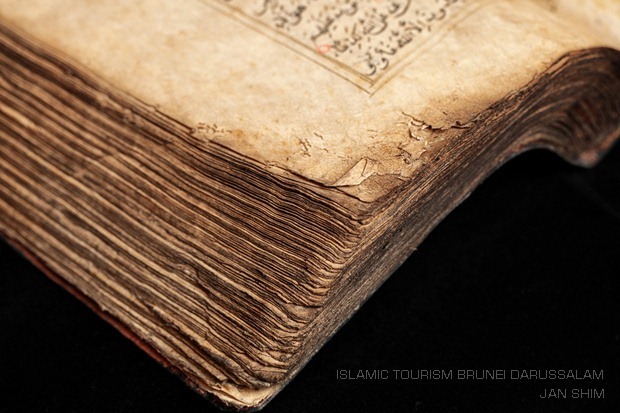
One
of the many aspects of this assignment that excites me is the use of
precision optics to capture the ruins of historical archives as paper is
a sensitive material that's susceptible to varying degrees of wear and
tear.
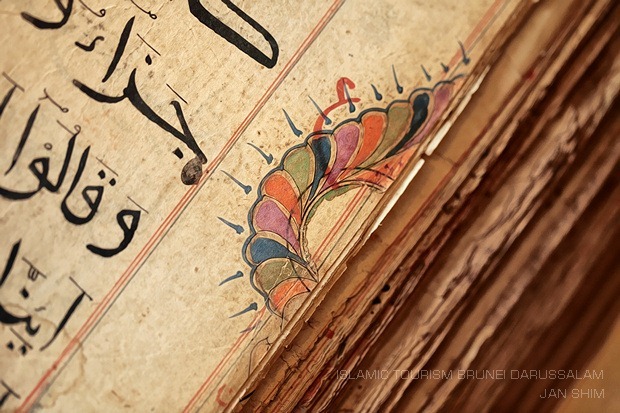
This
beautiful and unique marble engraved Al-Quran showcases great skill,
talent and patience to make, particularly as it inscribes the entire 30
juz (parts) of the Al-Quran.
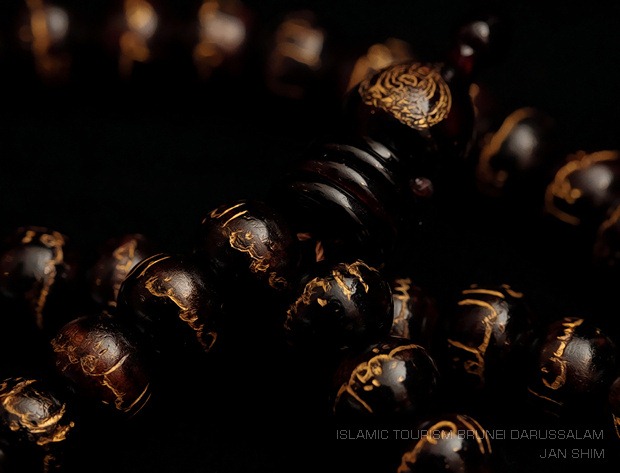
Prayer
beads used for zikir (Arabic word meaning repeated chanting of Allah's
names), usually contain from 33 to 39 pieces of small beads. The
collection includes more than 60 prayer beads made from sandalwood, oak,
jade and more. I understand this particular piece has His Majesty's
name and the Royal Crest inscribed.
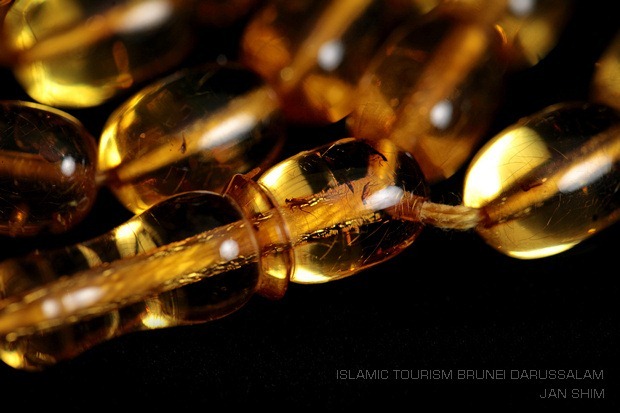
This
particular prayer beads I find to be most interesting. A bit of
research has led me to discover that "the most expensive botanical
jewelry is made from amber, fossilized resin from ancient forests that
flourished millions of years ago. Often the globs of hardened pitch
contain the bodies of insects--perfectly preserved in every detail as
though they were encased the day before."
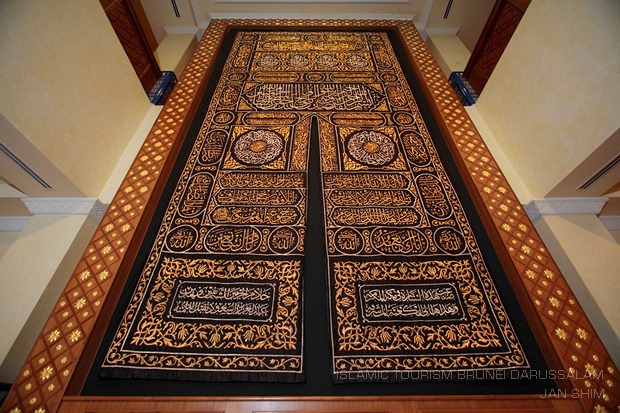
At the lobby of the exhibition gallery is this magnificient piece that stretches two floors.

This
beautiful and unique marble engraved Al-Quran showcases great skill,
talent and patience to make, particularly as it inscribes the entire 30
juz (parts) of the Al-Quran.
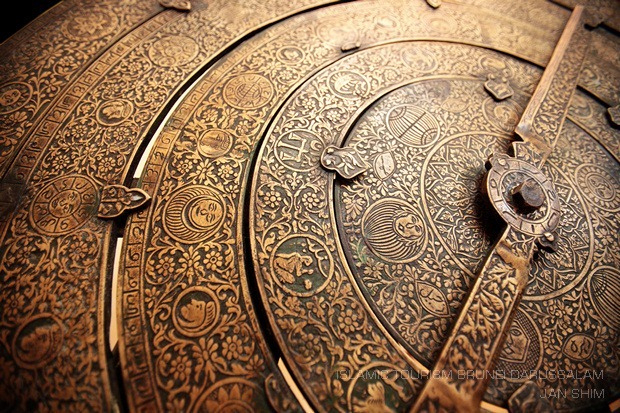
Islamic astronomy was particularly influential during the Islamic Golden Age.

Instruments
such as the intricate astrolabes found in the collection were used by
astronomists mostly from the 8th to the 15th centuries as a means of
studying the stars for navigational purposes.











